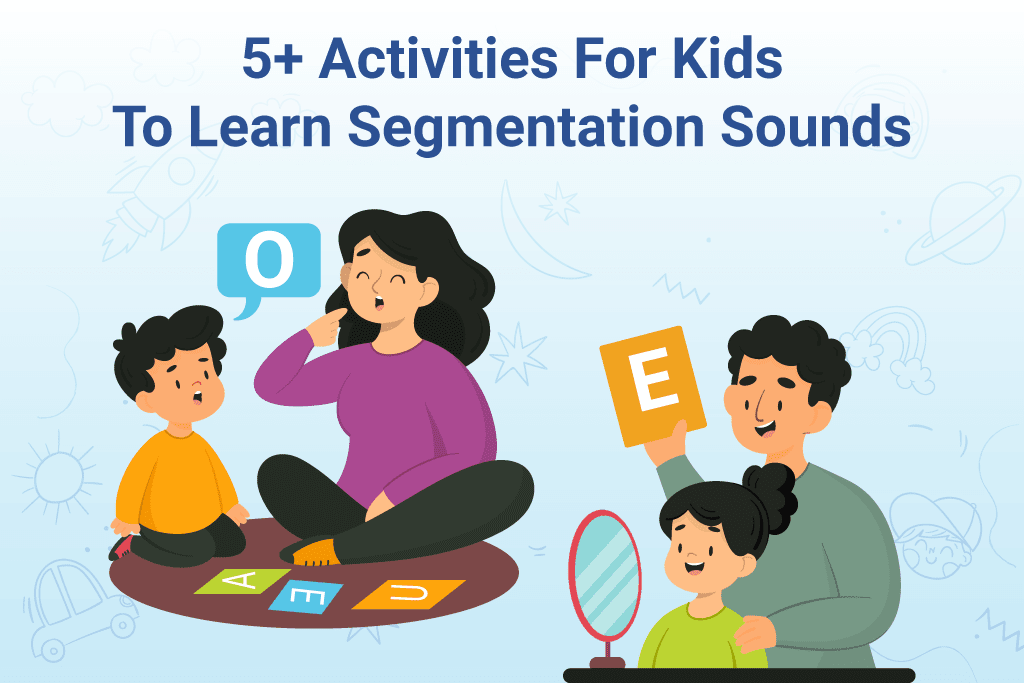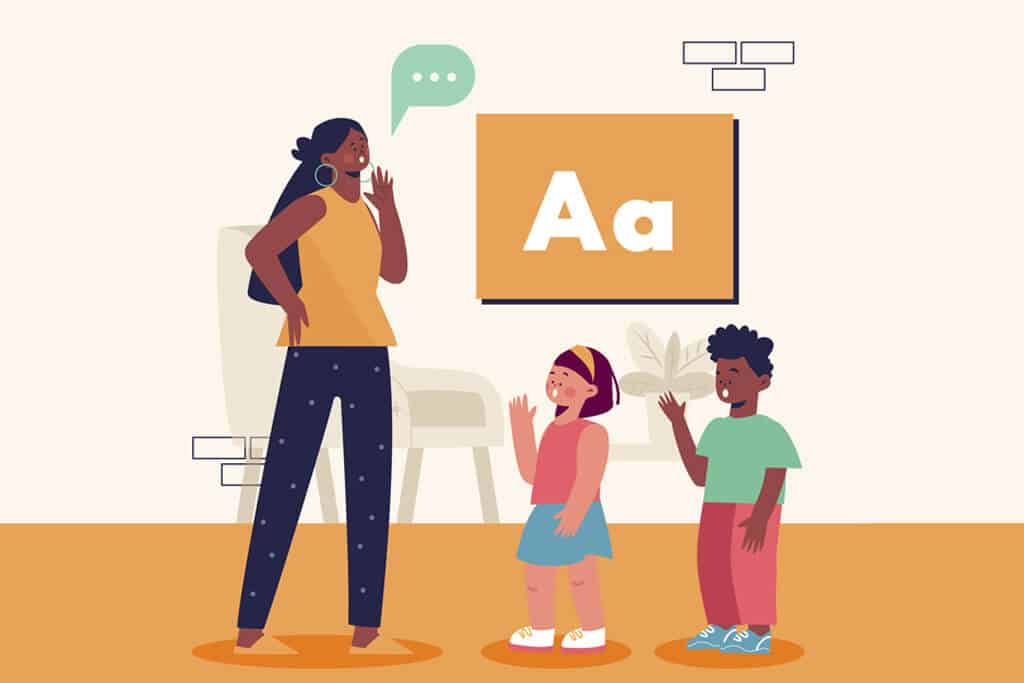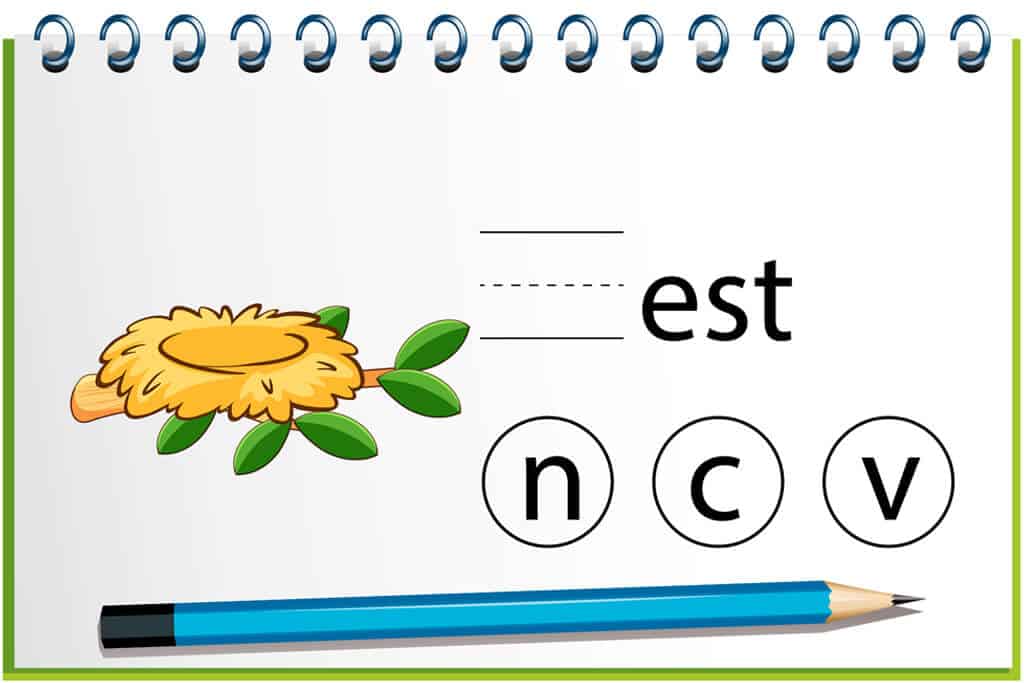5+ Activities For Kids To Learn Segmentation Sounds
A child might struggle in building up words and communicating how he feels. However, some foundational skills, such as phoneme segmentation, ease the job. Teaching phoneme segmentation skills to any child can help to build his reading and writing awareness.
With phoneme segmentation training, a student can easily break off sounds. Also, this skill teaches a student to blend sounds. It simplifies reading and writing for them.
If your child is struggling with spelling words, perhaps, it is time to help them develop phoneme segmentation skills. A couple of activities allow kids to learn the relationship between letters and sounds. With jolly phonics segmenting skills, a child can pay attention to some foundational elements that contribute to spoken language.
Looking to help your child learn segmentation sounds? Try our fun and engaging activities today!
Segmentation Activities For Kids To Learn
Here are 5+ activities with segmenting phonics examples that teachers are taught at phonics teacher training.
1. Blend and Go-Seek
Blend and Go-Seek is the most common way of helping students learn phoneme segmentation. Most teachers in primary schools use this way to help children develop an awareness of sound.
This phoneme segmentation activity works in the following way:
- A teacher can use a couple of objects when indulging a child in the blend and go-seek segmentation activity. It could be a book, a pen, a pencil, a bag, or even an eraser.
- Instead of using some real objects, the teacher can also use segmentation picture cards.
- This activity could also include a robotic sound.
- The teacher segments one object or a picture card to which students pay attention.
- Now, the teacher would ask the children to go and find the p-e-n.
- Then, the children would indulge in blending to choose the right kind of object.
- While blending, children often hear the segmentation done by their teacher.
- The robot voice will help a student echo the voice and learn segmentation.
- Teachers can motivate the students to replace the robot voice and practice segmentation themselves.
- After constant repetition, this activity greatly helps a student practice blending and segmentation.
2. Tapping Out Sounds
Tapping out sounds is another great way to help students learn segmentation skills. These kinds of phonemic segmentation activities are widely popular because of their easy implementation. The teacher does not need many objects to bring sound awareness into her students when using tapping out sounds segmentation activity.
A great thing about tapping out sounds is that a teacher can use them all the time. Besides, only fingers are sufficient to execute this segmentation activity.
Tapping out sounds works in the following ways.
- A teacher can have any word in his mind. Let’s consider a ‘pen’ in this case.
- Tapping out sounds will require children to tap on any object with every alphabet. You could ask children to tap on their arms while spelling the word.
- For instance, while saying ‘p,’ a student could tap on their elbow with their thumb. For ‘e,’ they could tap with their index finger. With ‘n,’ they could use their middle finger for tapping.
- The basic idea behind this phonics segmentingactivity is that a child taps his finger for every alphabet in the word.
- Using worksheets or flashcards, you could also make this segmentation activity work.
3. I Spy
Credit: Just Phonics
I spy is the perfect among all oral blending and segmenting activities that most teachers execute at Phonic classes for kids. It helps the child segment the words. ‘I spy’ promotes perfect sound blending for children.
Using this segmenting activity, a teacher makes the student focus on word segmentation. So, a child’s focus is on more than the first sound.
The teacher can use various sentences to involve students in this segmentation activity. For example, a teacher can use the following sentence. ‘I spy with my big eyes, something in front of me. What is it? It is a b-o-o-k.
So, a student would be able to segment the letters in the word ‘b-o-o-k.’
4. Segment And Peg It
Segmenting activities for kindergarten also include segmenting and pegging it. Usually, a teacher provides children with pictures containing clothing, pegs, and dots.
The dots are the representation of the phoneme count for the spoken word.
- A child would indulge in segmentation by pointing to each dot.
- Every time we use a pig with each dot, they repeat the segmentation.
- This activity helps children aurally blend the word. It is also perfect for helping them learn letter-sound knowledge.
- A teacher can bring a slight variation in this segmentation activity. It can also include magnetic letters, with each peg containing a letter.
5. Oral Toy Talk
As the name suggests, this segmentation activity involves a teacher in toy-talking. For instance, a teacher can have a toy in front of the students. A teacher can use oral toy talk to promote easy learning of kindergarten segmenting words. This activity offers kids to have the opportunity of developing sound awareness while being playful.
The teacher can indulge in oral toy talk in the following way.
- You can have a stuffed toy in front of the students.
- Then, you can put a simple question in front of the students. For instance, you can ask them, ‘what does the panda like to eat?’ ‘A bun.’
- It will help focus a student’s attention on the bun.
- While the teacher pretends to make the panda eat the bun, the students can easily learn how to segment b-u-n.
6. Breaking Up Words
Phonics segmenting is also possible with the breaking up words activity. The breaking up words segmenting activity is highly popular because it offers you an easy way out to help students learn sound awareness.
- Usually, a teacher gives students a card with several dots having a one-to-one correspondence with the number of letters in a word.
- This activity involves a teacher prompting students to build awareness. However, as they build awareness, a teacher can minimize the prompting efforts.
- Also, phoneme segmentation activitiessuch as this require a lot of practice.
7. Squaring Up
Credit: Julie Van Alst
This activity is a highly loved one. It is the best teacher segmentation activity that several teachers use. It is a great learning tool that students can use to help build their reading and sound awareness skills.
Squaring up can involve a teacher using a plastic tile. In case of the non-availability of a plastic tile, you can even use bingo chips. This activity involves the teacher placing the plastic tile under each square. Then, a teacher would say a word and ask the student to move one tile for every sound in the word.
Thus, squaring up activity helps build a perfect sound recognition awareness in the student. It also helps develop a child’s reading and conversational skills. Plus, since they know the activity they execute for every sound in the word, they can remember and recognize the word in a much better way.
Looking to help your child learn segmentation sounds? Try our fun and engaging activities today!
Conclusion
So, phonics segmentation activities are a perfect way for students to decode words and build sound awareness. With these 5+ activities for phonemic segmentation, a student can break down the words into their fundamental phonemic chunks. Doing it allows a student to read, spell, and write the word fluently.
These seven activities make a student better at recognizing words. Also, they can ‘sound out’ the words in a much better way. Thus, they can build stronger vocabulary and improve their sense of literary acquisition.
Besides, vocabulary development is a great feature of phonemic segmentation activities.
Such activities serve the best for any student in learning how to read. A teacher can begin phoneme segmentation with students once the student develops knowledge of blending complicated or complex words together. If you are interested in learning some more methods, you can join our phonics teachers training.




